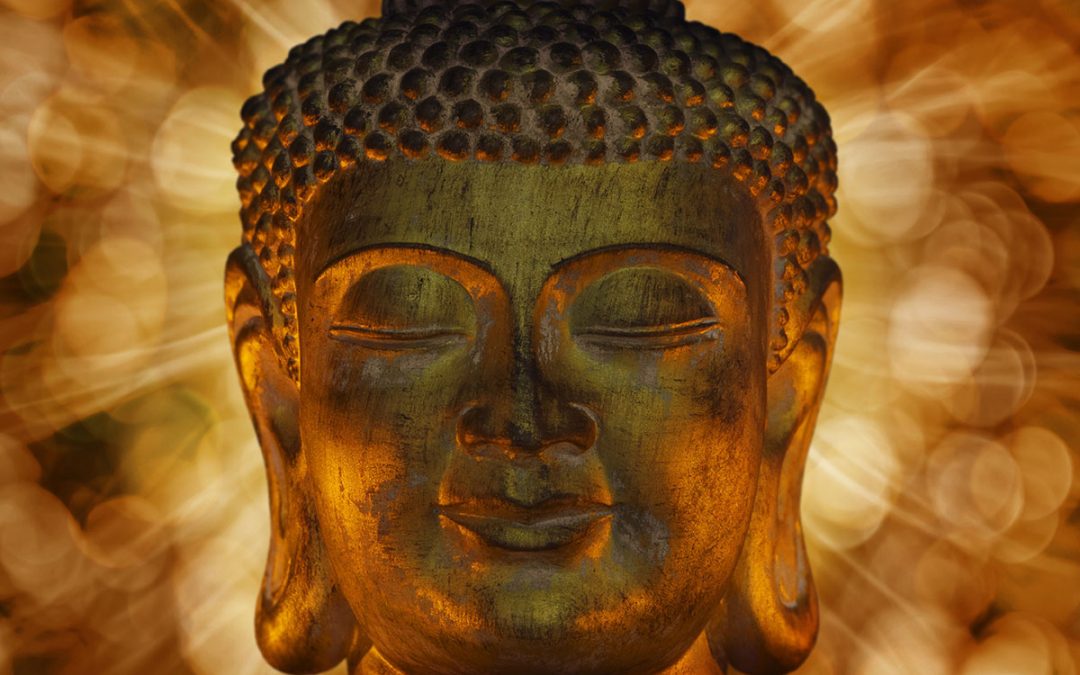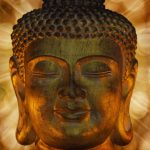The Art & Practice of Presencing
When feeling overwhelmed or simply need a break,
Take a breath, take a breather.
Just for a moment, take a deep breath or three
And step off the treadmill of conditioning.
Stop running, striving, hurrying and scurrying around,,
Bent under the weight of habit and conditioning
And pockets full of To Do lists!
Take a breath, take a breather,
Take a break; give yourself a break!
Be here now, as you always are
But aren’t always consciously aware of it.
Awareness is curative, mindfulness heals: tune in, pay attention.
This practice pays off, big time.
Mindfulness practice is a friend with great benefits.
Nowness-awareness is the natural and unfabricated Buddha within,
Thehigh ground, like Heaven within– so enjoy it, savor it.
Cultivate and develop it.
Ordinariness and spontaneity is a great way
To walk.
Let go, let things come and go,
Arise and fall in consciousness,
Body and mind:
Let go
And let be. That’s the secret.
Cultivate equanimity, openness, harmony, relaxation, and balance.
Awareness is a verb. Practice the sacred art
Of Presencing, right here and now.
Mindfulness is the opposite of mindlessness,
So heighten your presence of mind
Through, for example, breath-watching or pulse-sensing.
Rest in the natural state
Just as you are
And enjoy the joy and harmony,
The inner peace
of natural meditation.
—Lama Surya Das
Buddhist Meditation: The Heart Essence
During my initial private meeting with the Venerable Kalu Rinpoche, my first root guru, I asked him about the main points of meditation. He asked what kind of meditation I was doing, and I told him mindfulness of breathing. “What will you concentrate on when you stop breathing?” he asked.
That was a real eye-opener. Suddenly I realized that I might have to broaden the scope of my understanding of Buddhist practice. In time, I came to discover that it included a great deal more than any one meditation technique and also that the many forms of Buddhist meditation shared fundamental elements.
The philosopher Simone Weil characterized prayer as pure undivided attention. Here is where all contemplative practices have a common root, a vital heart that can be developed in an almost infinite variety of skillful directions, depending on purpose and perspective. Different techniques of meditation can be classified according to their focus. Some focus on the field of perception itself, and we call those methods mindfulness; others focus on a specific object, and we call those concentrative practices. There are also techniques that shift back and forth between the field and the object.
Meditation, simply defined, is a way of being aware. It is the happy marriage of doing and being. It lifts the fog of our ordinary lives to reveal what is hidden; it loosens the knot of self-centeredness and opens the heart; it moves us beyond mere concepts to allow for a direct experience of reality. Meditation embodies the way of awakening: both the path and its fruition. From one point of view, it is the means to awakening; from another, it is awakening itself.
Meditation masters teach us how to be precisely present and focused on this one breath, the only breath; this moment, the only moment. In the Dzogchen tradition we refer to a “fourth time,” the transcendent moment of nowness. In Tibetan this is called shicha, a transcendent yet immanent dimension of timeless being that vertically intersects each moment of horizontal linear time—past, present, and future. Whether we’re aware of it or not, we are quite naturally present to this moment—where else could we be? Meditation is simply a way of knowing this.
Different Buddhist schools recommend a variety of meditative postures. Some emphasize a still, formal posture, while others are less strict and more focused on internal movements of consciousness. Tibetan traditions, for instance, advise an upright spine, erect but relaxed; hands at rest in the lap, with the belly soft; shoulders relaxed, chin slightly tucked, and the gaze lowered with eyelids half shut; the jaw is slack with the tongue behind the upper teeth; the legs are crossed. A Soto Zen Buddhist saying instructs us to sit with formal body and informal mind. The common essential point is to remain balanced and alert, so as to pierce the veil of samsaric illusion.
Although most Westerners tend to conceive of Eastern forms of meditation as something done crosslegged with eyes closed, in a quiet, unlit place, the Buddha points with equal emphasis to four postures in which to meditate: sitting, standing, walking, and lying down. The Satipatthana Sutra says: “When you sit, know that you are sitting; when standing, know you are standing. . . .” This pretty much covers all our activities, allowing us to integrate meditative practice into daily life. Learn to sit like a Buddha, stand like a Buddha, walk like a Buddha. Be a Buddha; this is the main point of Buddhist practice.
While many people today practice meditation for physical and mental health, a deeper approach to practice energizes our inner life and opens the door to realization. In Tibetan, the word for meditation is gom, which literally means “familiarization” or “getting used to,” and in this sense meditation is a means by which we familiarize ourselves with our mind. The common Pali term for meditation is bhavana, meaning “to cultivate, to develop, to bring into being.” So we might then think of meditation as the active cultivation of mind leading to clear awareness, tranquility, and wisdom. This requires conscious effort.
But from another—and at first glance contradictory— perspective, there is nothing to do in meditation but enjoy the view: the magical, mysterious, and lawful unfolding of all that is, all of which is perfect as it is. In other words, we’re perfect as we are, and yet there’s work to be done. In this we find the union of being and doing: we swoop down with the bigger picture in mind—the view of absolute reality—and at the same time we climb the spiritual mountain in keeping with our specific aspirations and inclinations, living out relative truth. “While my view is as high as the sky, my actions regarding cause and effect [karma] are as meticulous as finely ground barley flour,” sang the Lotus Master Padmasambhava, who first brought Buddhism to Tibet in the eighth century. By alternating between active cultivation and effortless awareness, we engage in a delicate dance that balances disciplined intention with simply being. By being both directive and allowing, we gradually learn to fearlessly explore the frontiers and depths of doing and being, and come to realize that whatever is taking place, whatever we may feel and experience, is intimately connected with and inseparable from intrinsic awareness.
“Not doing, not constructing, not fabricating, not altering or manipulating your mind, while remaining undistracted: this is my vital pithy instruction, the heart-essence of meditation.” So taught my own Dzogchen master Nyoshul Khenpo Rinpoche. “Beyond action and inaction, the sublime dharma is accomplished.”
Meditation is not about getting away from it all, numbing out, or stopping thoughts. Without trying to be rid of pesky thoughts and feelings, we learn how to practice being aware of them in the fleeting immediacy of the very moment in which they present themselves. We can cultivate awareness of any object: sounds, smells, physical sensations, perceptions, and so forth. Everything is grist for the mill—even those things we find terribly unpleasant. As the Tibetan Dragon Master Gyalwang Drukpa says, “Everything must be meditated!”
Like the archer straightening his arrow and perfecting his aim, the practitioner of meditation straightens out the mind while aiming his or her attentional energy at its object. Learning to drop what we’re doing, however momentarily, and to genuinely pay attention in the present moment, without attachment or bias, helps us become clear, just as a snow globe becomes clear when we stop shaking it and its flakes settle.
This settling process of concentrated attention has four stages: first, the letting go of distracting inner objects— such as feelings, thoughts, attractions, and aversions— and all outer objects; second, the attainment of serene one-pointedness of focus; third, the refinement of this state of concentration into a subtler and purer awareness. The fourth and final stage is the attainment of a state of simple wakefulness and equanimity conducive to clear vision and profound comprehension, an awareness beyond subject and object.
Let’s take an example: In breath-awareness meditation—the technique known as mindfulness of breathing (anapanasati in Pali)—we first observe the breath by intently following the tiny movements and physical sensations associated with each in- and out-breath. When we are distracted, we simply bring the wandering mind back to the object of attention. (In this case it is the breath, but whatever the particular practice—mantra, visualization, and so forth—the principle is the same.) Then, gradually relaxing into the object, we notice the gentle tide of thoughts and feelings subside as we fine-tune our focus. Later, as our awareness deepens, we abandon any dualistic notion of inner and outer as we become the breath itself. This calls to mind the haiku master Basho’s saying that in order to write about a tree, he would watch the tree until he became the tree. We watch the breath until we become the breath. In this way, as it is said in Zen, we come to know the breath, ourselves, and all things intimately.
In the beginning, concentration is key. Concentrative meditations (Sanskrit shamatha) are said to be the useful means but not the end. The stability of mind established by shamatha becomes the foundation for insight meditation, or vipassana, in which the critical faculties of mind discern the nature of samsara: impermanent, without self, and ultimately unsatisfactory.
There are many techniques for developing concentration and insight, but the point is to not be caught up in and overly influenced by the ever-running narratives and desires of the mind. All center on the vital principles of nonjudgmental openness and relaxation with applied and discerning awareness. As practice matures, effortless, innate wakefulness is balanced by the discipline of mindfulness. What we call “mindfulness meditation” can be broadly defined as any conscious activity that keeps the cling-free attention anchored in the present moment, allowing us to see clearly what is happening, to distinguish what is wholesome from what is unwholesome, and to perceive the interdependent working of things. In the Satipatthana Sutra the Buddha identified four basic foundations of mindfulness: the body, feelings (in the sense that all sense impressions feel pleasant, unpleasant, or neutral), mind states and mental objects, and universal laws (dharmas). Paying careful attention to these aspects of ourselves brings self-knowledge and wisdom.
Mindfulness is the tool we use to bring the mind back home, to the present moment, to what is, just as it is, and to who and what we actually are. Through mindfulness we learn how not to be so distracted by thoughts, feelings, memories—our running inner narrative. That’s why buddhas are called jinas,“conquerors”: they have conquered their afflictive states of hatred, greed, and delusion, all of which obscure and diminish our innate Buddha-nature.
Mindful awareness frees us from habitual patterns, opening up a space between stimulus and response, allowing us to consciously choose how to respond to things rather than blindly react. With the discernment of mindfulness we no longer fall prey to karmic habits and unwholesome conditioning. As the pioneering Zen master Shunryu Suzuki said, “We pay attention with respect and interest, not in order to manipulate but to understand what is true. And seeing what is true, the heart becomes free.”
This is not just Buddhist double-talk. In the Diamond Sutra the Buddha says of his enlightenment that he has obtained nothing that wasn’t in him all along, there for the finding. And the Hevajra Tantra teaches, “We are all buddhas by nature; it is only adventitious obscurations which temporarily veil it from us.”
There are various Buddhist schools with different approaches and practices, but committed meditation practice is, in short, the way we apply the Buddha’s final words: “Work out your own salvation with diligence.”
In Tibetan Buddhism it is said that detachment is the root of meditation and devotion is its head. Bodhicitta (the aspiration to attain enlightenment for the welfare of others) is its soul. Mindfulness is its breath, vigilence its skin, and nondistraction its essence. Balance and harmony are the seat of meditation, and penetrating wisdom is its eye. Nowness is the time, and this place is the place. Self-discipline is the very bones of Buddha, and present-moment awareness is the heart of it all.
Milarepa said, “The ultimate view is to observe one’s mind, steadfastly and with determination.” When the Buddha stated, over twenty-five hundred years ago, that anyone could become enlightened through applying his teachings, he meant it. And many have reaped those blessed results. This is the promise of Buddha-dharma, of the wisdom of meditation.
Copyright 2020 Lama Surya Das. All Rights Reserved.
 |
 |
 |
 |
 |
 |

Lama Surya Das is one of the foremost Western Buddhist meditation teachers and scholars. The Dalai Lama affectionately calls him “the American Lama”. Lama Surya has spent over forty five years studying Zen, Vipassana, Yoga, and Tibetan Buddhism with many of the great old masters of Asia, including some the Dalai Lama’s own teachers. He is an authorized lama in the Tibetan Buddhist order, a leading spokesperson for Buddhism and contemporary spirituality, a translator, poet, meditation master, chant master, and social-spiritual activist.
Lama Surya Das is the author of the international bestselling Awakening trilogy: Awakening the Buddha Within, Awakening to the Sacred and Awakening the Buddhist Heart, as well as his latest release, and first children’s book, The Yeti & The Jolly Lama: A Tale of Friendship, and eleven other books. In 1991 he established the Dzogchen Centers and Dzogchen Retreats and in 1993, with the Dalai Lama, he founded the Western Buddhist Teachers Network and regularly organizes its International Buddhist Teachers’ Conferences.
Today, Lama Surya Das teaches and lectures around the world, conducting dozens of meditation retreats and workshops each year. He is a regular contributor at The Huffington Post and Elephant Journal, as well as writing his own blog Ask The Lama. At least one hundred of his essays and white papers, keynote speeches, poems and cartoons have been published. Lama Surya can be followed on Facebook, Twitter, and Instagram; his own podcast Awakening Now can be found on the Be Here Now Network. For more information on Surya, as well as his lecture and retreat schedule, go to www.surya.org. Lama Surya Das resides in Lexington, Massachusetts.




